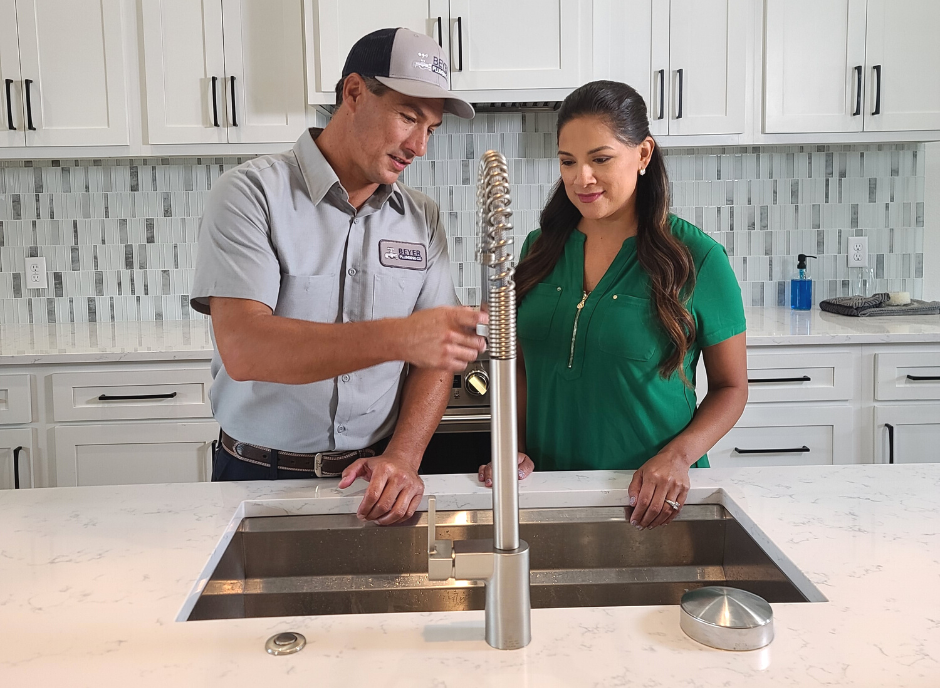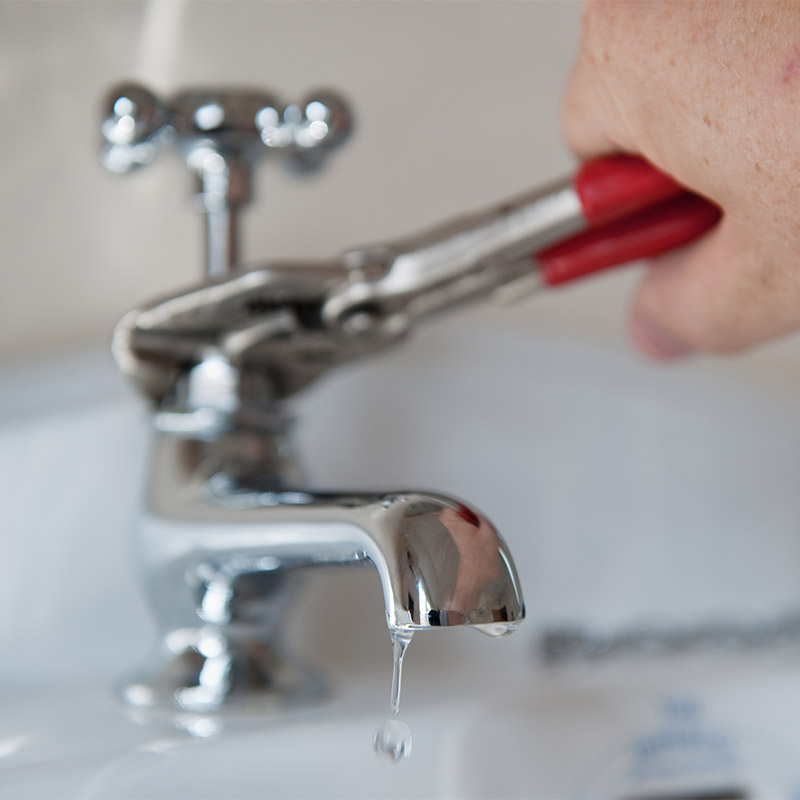How do you really feel about 4 Common Reasons for a Leaky Faucet?

Dripping faucets may appear like a minor hassle, however their effect exceeds simply the nuisance of the audio. From drainage to sustaining unneeded monetary expenses and health and wellness dangers, neglecting a leaking faucet can result in different repercussions. In this short article, we'll delve into why it's essential to address this usual family problem quickly and effectively.
Wastefulness of Water
Ecological Impact
Trickling taps contribute significantly to water waste. According to the Epa (EPA), a single tap leaking at one drip per secondly can lose more than 3,000 gallons of water annually. This not only stress water resources however also impacts communities and wild animals dependent on them.
Step-by-Step Overview to Fixing a Dripping Tap
Tools Needed
Prior to attempting to repair a trickling faucet, gather the needed devices, including an adjustable wrench, screwdrivers, substitute parts (such as washers or cartridges), and plumber's tape.
Common Faucet Issues and Their Solutions
Identify the kind of faucet and the specific concern triggering the drip. Typical problems consist of damaged washers, corroded valve seats, or defective O-rings. Refer to maker directions or online tutorials for step-by-step guidance on repair work.
Financial Costs
Increased Water Bills
Past the environmental effect, dripping faucets can blow up water costs significantly. The collected waste in time translates right into greater energy expenses, which can have been stayed clear of with timely repairs.
Possible Residential Property Damage
In addition, extended dripping can cause damage to components and surfaces bordering the faucet. Water build-up can trigger discoloration, corrosion, and also structural problems if left neglected, leading to added repair expenses.
Wellness Issues
Mold And Mildew and Mold Growth
The continuous presence of wetness from a leaking tap creates an optimal atmosphere for mold and mildew and mold growth. These fungi not only jeopardize interior air top quality yet additionally pose health risks, especially for people with respiratory system problems or allergic reactions.
Waterborne Conditions
Stationary water in leaking faucets can end up being a breeding ground for bacteria and other pathogens, raising the threat of waterborne conditions. Pollutants such as Legionella bacteria thrive in stationary water, possibly bring about severe diseases when ingested or breathed in.
DIY vs. Professional Fixing
Benefits and drawbacks of DIY Repair
While some might attempt to take care of a dripping faucet themselves, do it yourself repair work feature their own collection of challenges. Without correct knowledge and devices, DIY attempts can aggravate the issue or cause incomplete repair services, lengthening the problem.
Benefits of Working With a Specialist Plumber
Hiring a specialist plumber makes certain that the underlying source of the leaking faucet is resolved effectively. Plumbing professionals possess the expertise and tools to diagnose and repair faucet problems effectively, saving time and lessening the threat of additional damage.
Environmental Responsibility
Individual Payment to Conservation
Taking duty for taking care of dripping taps aligns with wider efforts towards water conservation and environmental sustainability. Every individual's activities collectively make a substantial impact on protecting valuable sources.
Sustainable Living Practices
By focusing on punctual repair work and adopting water-saving habits, people contribute to lasting living techniques that benefit both existing and future generations.
Preventive Measures
Normal Maintenance Tips
To stop leaking taps, do regular maintenance such as cleaning aerators, checking for leakages, and replacing damaged parts immediately. Additionally, take into consideration setting up water-saving tools or upgrading to a lot more reliable fixtures.
Value of Prompt Repairs
Attending to trickling taps as soon as they're discovered protects against more water wastage and prospective damage, eventually conserving both water and cash in the long run.
Effect On Property Value
Perception of Well-Maintained Residential Property
Keeping a residential or commercial property in good condition, including addressing maintenance concerns like trickling taps, improves its viewed value and desirability amongst prospective purchasers or tenants.
Influence on Resale Worth
Residences with properly maintained plumbing components, including taps, command higher resale worths in the realty market. Addressing leaking faucets can add to a positive perception during residential property evaluations and settlements.
Verdict
Dealing with a trickling faucet exceeds plain convenience; it's a necessary action toward saving water, lowering financial expenses, and securing health and wellness and home. Whether via do it yourself repairs or professional aid, taking action to fix dripping faucets is a small yet impactful way to promote liable stewardship of resources and add to a healthier, more sustainable future.
How to Fix a Leaky Faucet: Step-by-Step Repair Guide
A leaky faucet may seem like a simple annoyance, but if it's not fixed promptly, that leak could cost hundreds to potentially thousands. From water damage to mold, mildew, and high water bills, even a tiny leak can be catastrophic if left unattended. Damage like this can even affect the overall value of your home, so it's important to take the right approach for leaky faucet repair. You may need the help of a plumber in some cases, but we've got a few tips you can try on how to fix a leaky faucet before calling the pros.
Four Faucet Types
When you're learning how to fix a leaky faucet, the first step is knowing what kind of faucet you're working with! There are four common types.
Cartridge Faucets
Cartridge faucets come in one- or two-handled varieties. In one-handled cartridge faucets, hot and cold water combines in a single cartridge. In the two-handled versions, hot and cold water are controlled separately and mixed in the faucet.
Ball Faucets
Ball faucets have a single lever you push up and down to adjust the pressure and rotate to change the temperature. A slotted metal ball controls the amount of water allowed into the spout.
Compression Washer Faucets
They're the oldest type of faucet, but they're still used in many homes — especially older ones. Compression faucets have two separate handles that, when turned, raise or lower the washer that seals a water valve. This valve stops water from flowing through the faucet when it is turned off.
Disc Faucets
Disc faucets rarely need to be repaired due to their maintenance-free design. The water flow is controlled by two discs — the upper one raises and lowers against a fixed lower disc, creating a watertight seal. If your disc faucet starts leaking, you may need to replace the seals or clean residue buildup from the inlets.
Fixing a Leaky Faucet
Step 1: Turn Off the Water
Whether you're learning how to fix a leaky bathtub faucet or how to fix a leaky kitchen faucet, always turn off the water supply to your working area when you're fixing a leak. The last thing you want is a flood added to your list of things to fix.
Look for the shutoff valves below your sink or around the tub and turn them clockwise to stop the water flow. If your faucet doesn't have shutoff valves, you may need to turn off the water for the whole house. Check to make sure it's off by turning the faucet on. If nothing comes out, you're ready to start the repair.
Step 2: Take Apart the Faucet
How you disassemble your faucet depends on the type of fixture you have. You can use a flathead screwdriver to remove the caps on top of the handle or handles for cartridge and compression faucets. Inside, you should see handle screws. Unscrew these with a screwdriver to remove the handle.
Disc- and ball-style faucets will typically have an inlet screw near the handle, and removing that will reveal the interior of the faucet.
Detach the Valve Stem
For cartridge- and compression-style faucets, you'll see the inner valve stem or cartridge once you remove the faucet handles. If you have a compression faucet, unscrew the brass valve stem. If you have a cartridge faucet, pull out the cartridge. If your cartridge has been in place for a while, it may require some tools or extra force to remove it due to mineral deposits.
Examine and Replace Parts
Once you've removed the parts, check them out to confirm what needs to be replaced. You may see corroded rubber washers, O-rings, stems, or cartridges. On a ball-style faucet, check the seats and springs for damage.
If you need to repair a leaky disc faucet, check the inlet and seals on the lower disc.
Once you determine what parts must be replaced, visit your local hardware store. Bring the damaged parts with you to ensure you can purchase the correct components to replace them.
Clean Valves and Faucet Cavity
If you've removed a stem or cartridge, you may notice mineral buildup in the faucet's threads. Use white vinegar to clean the valve seat by soaking it for a few minutes, then scrub it away with a soft toothbrush and rinse with warm water. You can also clean the interior of the faucet in the same way.
Reassemble the Faucet
Once your faucet is cleaned and the required parts have been replaced, it's time to reassemble it. Put the pieces back together and slowly turn the water supply back on. Doing this slowly is crucial because too much initial water pressure can damage the new hardware you've just installed.
https://homewarranty.firstam.com/blog/how-to-fix-leaky-faucet

I was guided to that article on How to Fix a Dripping or Leaky Faucet through an associate on another website. Feel free to pause to share this content if you liked it. I praise you for your time. Revisit us soon.